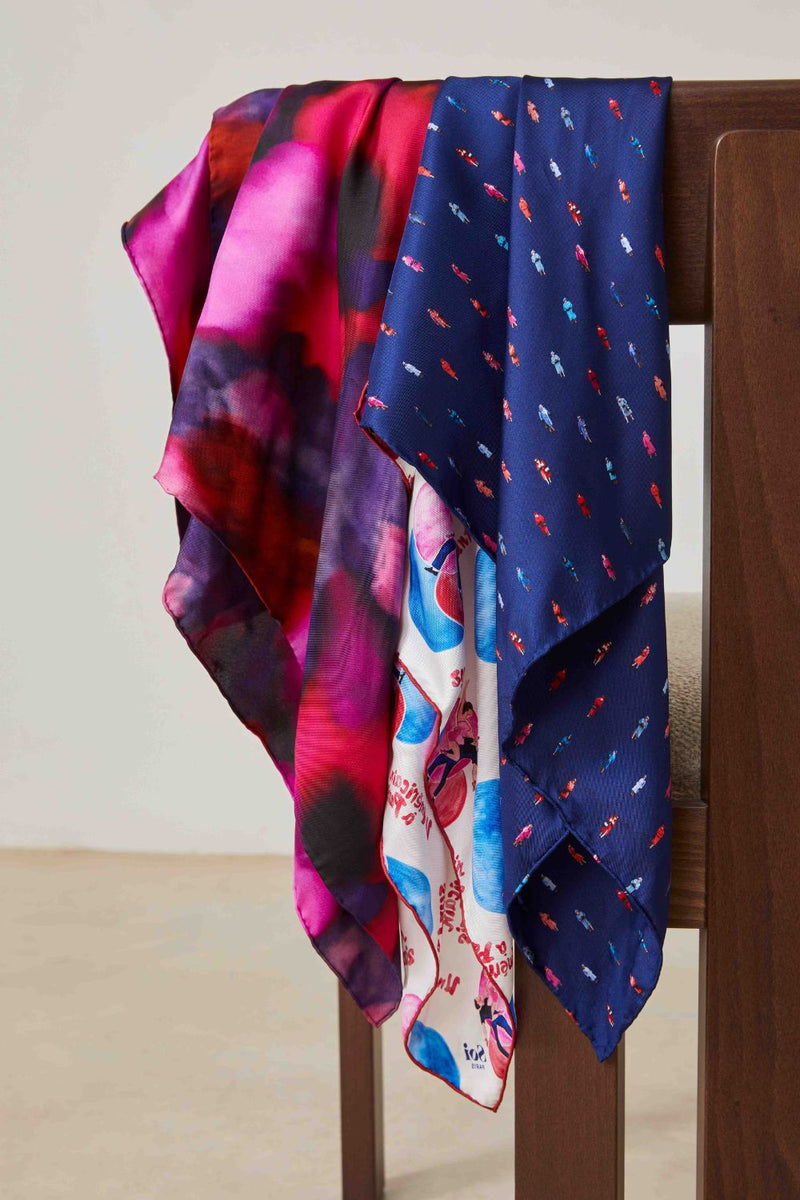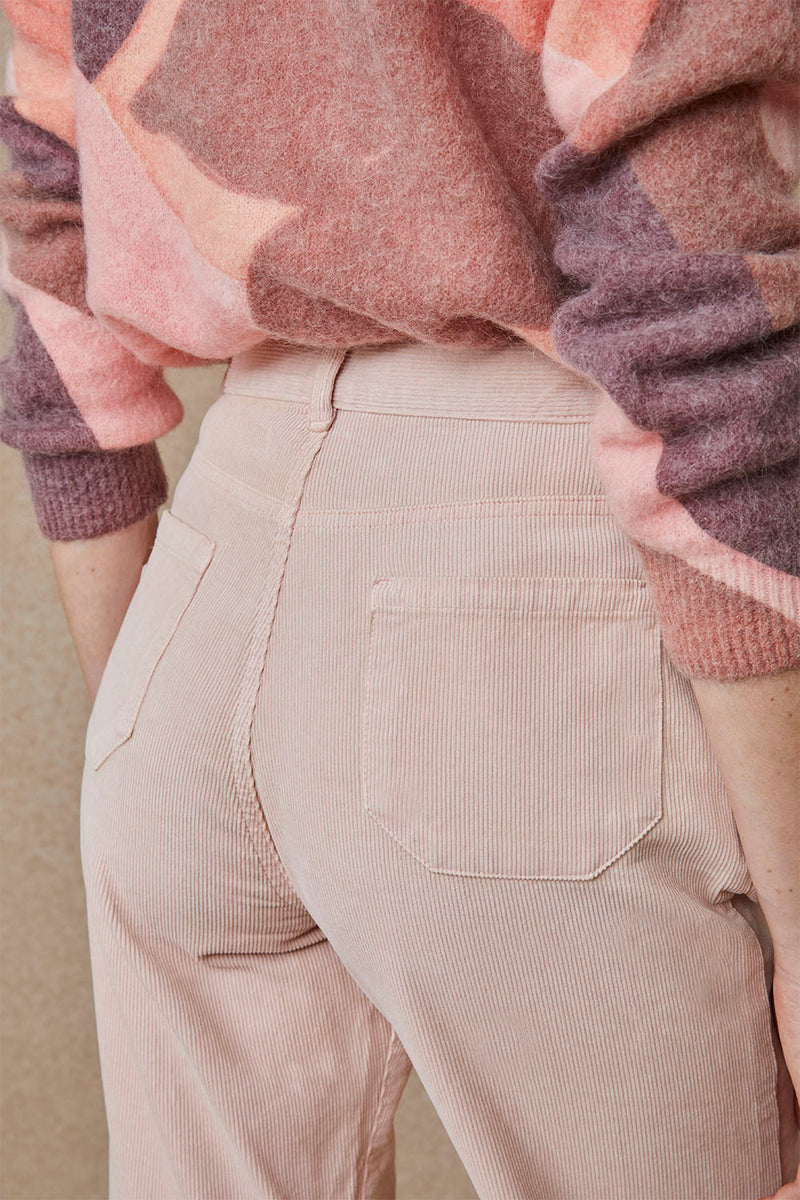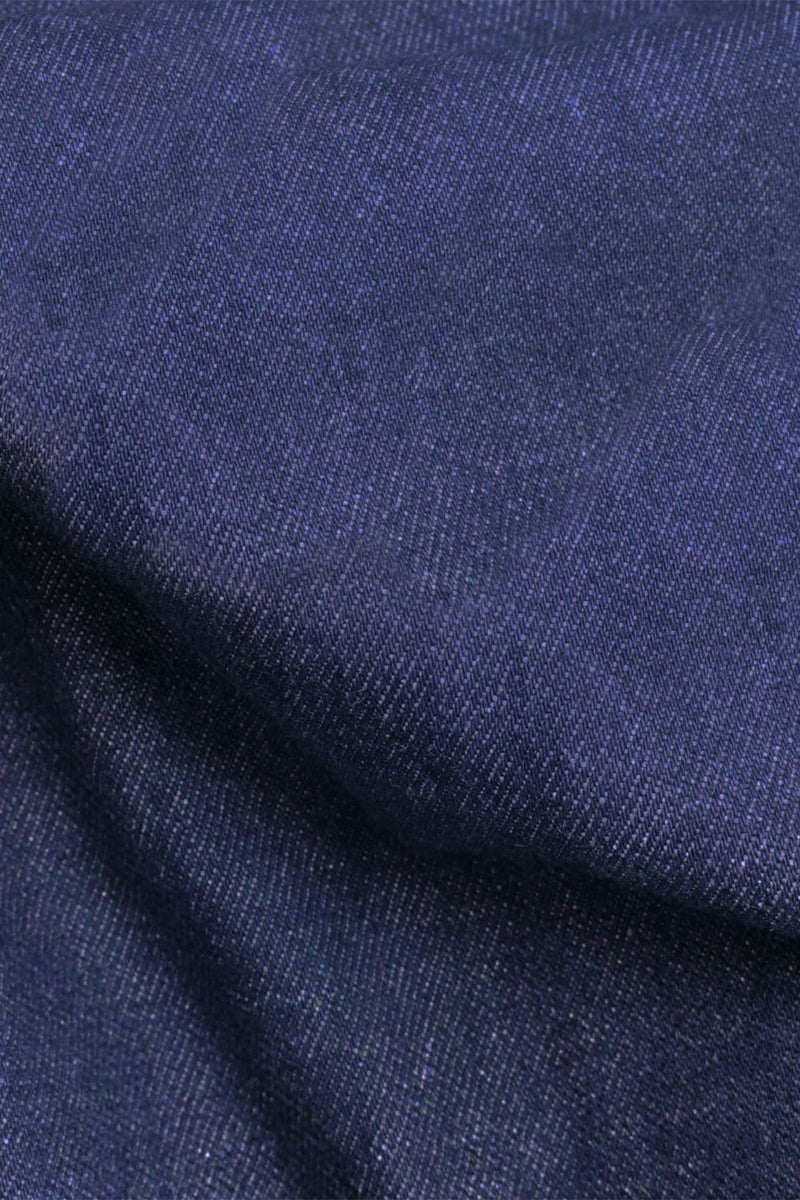Conseils d'entretien
Comment laver
ses vêtements en soie ?
«Chez Soi, nous sélectionnons avec soin nos matières pour garantir une qualité irréprochable et une durabilité optimale de vos pièces.
Les facteurs de vieillissement du textile sont nombreux : une exposition excessive aux UV, les conditions de stockage, ou encore des méthodes de lavage et de séchage non adéquates.
Pour garder nos jolies pièces le plus longtemps possible, il faut en prendre soin en adoptant les bonnes conditions de lavage et de séchage car chaque matière a sa spécificité. On vous dévoile nos secrets pour chouchouter vos vêtements et conserver un aspect neuf, des fibres en bon état et une belle fluidité !»
Aurélie & Julia


Conseil n°1
Comment laver un vêtement en soie ?
Robes, chemisiers, blouses, jupes, vous avez craqué pour l’une de nos pièces en soie et vous voulez connaître nos conseils pour en prendre soin et les garder le plus longtemps possible ? On vous dit tout, une fois les bonnes indications en main pour laver de la soie, ce n’est pas si compliqué !
La soie est une matière naturelle, noble et délicate qui peut être portée plusieurs années si elle est bien entretenue. La soie est donc à manier avec précaution. Utiliser les bonnes conditions de lavage pour la soie est primordial pour ne pas abîmer la fibre. Mousseline, crêpe ou twill, ces tissus aux aspects différents (mats, brillants, souples, etc.) sont tous issus d’une même fibre : la soie. Avant de laver votre vêtement en soie, vérifiez les instructions relatives à l’entretien, inscrites sur l’étiquette intérieure.
Découvrez toutes nos astuces et les différentes étapes à suivre pour laver votre pièce en soie correctement et la garder de nombreuses années.


1. Le lavage de la soie
La soie doit être lavée délicatement. Nous recommandons un nettoyage à froid à la main, avec la possibilité d’un lavage à sec, si indiqué sur l’étiquette du vêtement (pièce doublée), il faudra confier votre pièce au pressing. Nous déconseillons le lavage en machine pour vos pièces en soie.
Comment laver la soie à la main ? Utilisez une lessive spéciale pour soie et ne laissez pas tremper votre pièce plus de 5 minutes dans l’eau savonneuse. Veillez à ne pas ajouter d’adoucissant, car cela graisse et alourdit la matière. Pensez à enlever vos bijoux et à vérifier l'état de votre bassine ou évier pour éviter les fils tirés. Évitez de frotter pour enlever une tâche ou de tordre le vêtement.
*En cas de tâche, agissez rapidement pour éviter que la tâche sèche et demandez conseil à un professionnel. N’utilisez pas de détachant.


2. Le séchage de la soie
Nous déconseillons fortement l’essorage en machine ainsi que le sèche-linge pour un vêtement en soie, cela risquerait d’abîmer la fibre et de faire rétrécir votre pièce. Une fois le lavage de la soie terminé, pré-séchez votre vêtement délicatement en le roulant dans une serviette éponge sans l’essorer ou le tordre. La soie est sensible à la lumière, placez votre vêtement loin d’une source de chaleur et éloignez-le des rayons directs du soleil car cela peut provoquer une décoloration, le fragiliser et accélérer son usure. Le séchage peut se finir sur cintre, à l’air libre.


3. Le repassage de la soie
Peut-on repasser de la soie ? La soie sèche très rapidement et peut-être repassée mais en prenant des précautions. Comment repasser de la soie ? La soie doit être repassée à sec à fer doux. Lors du repassage de la soie, mettez le vêtement sur l’envers. Le fer à repasser doit être à la température la plus basse possible et sans vapeur pour ne pas abîmer ni brûler la fibre. N’appuyez pas votre fer sur les coutures. Après avoir fini de repasser votre vêtement en soie, placez-le sur cintre à l’abri des rayons du soleil ou d’une source de chaleur et attendez que ce dernier soit totalement sec avant de le ranger, au risque de créer des plis.
Vous connaissez désormais tous les conseils d’entretien pour nettoyer, sécher et repasser votre vêtement en soie, qu’il s’agisse d’un chemisier, d’une blouse, d’une robe ou encore d'une jupe. En suivant toutes ces étapes simples de notre guide d’entretien de la soie, votre vêtement sera impeccable après chaque lavage. Respecter avec précaution les instructions de lavage de la soie garantira la longévité de votre pièce.


Conseil n°2
100% Twill de Viscose
1. Le lavage
Pour prendre le plus grand soin de votre pièce, préférez un lavage à la main.
2. Le séchage
Le sèche-linge est à proscrire pour un vêtement en viscose, un séchage sur cintre est donc
plus approprié. Pas d’inquiétude si votre vêtement sort de la machine avec un effet « cartonné », le tissu reprendra sa texture initiale une fois sec et repassé.
3. Le repassage
La viscose se repasse encore humide, sur l'envers, à 110° environ avec une pattemouille
pour plus de précaution. C’est à cette étape que le vêtement en viscose retrouve sa taille initiale. Il
est important de ne pas utiliser la fonction vapeur de votre fer à repasser pour ne pas abîmer le vêtement.


Conseil n°3
Laine - Cachemire
1. Le lavage
Un programme spécial laine à froid (30° maximum) ou délicat est fortement conseillé pour éviter un rétrécissement. Vous pouvez également opter pour un lavage à la main sur l’envers. Essorez doucement votre cachemire à 600 trs/min maximum. L’utilisation d’une lessive spéciale laine est recommandée mais n’ajoutez surtout pas d’adoucissant.
2. Le séchage
Faire sécher votre vêtement à plat (dans le fond d’une baignoire ou à plat sur un étendoir). Le séchage au sèche-linge est proscrit. Ne suspendez pas votre pièce sur cintre lorsqu’elle est mouillée, elle pourrait se déformer. Si vous voulez essorer un peu votre vêtement, ne tordez pas votre textile mais roulez le dans une serviette et pressez doucement.
3. Le repassage
Repassez légèrement votre vêtement en laine et cachemire sur l’envers avec un fer légèrement chaud (110°). Utilisez toujours un linge (éventuellement légèrement humide). Ne repassez pas les bord-côtes (col, manches…) afin qu’ils conservent leur élasticité.


Conseil n°4
Mélange contenant de la Laine
1. Le lavage
Préférez un lavage à la main sur l’envers. Nettoyage à sec autorisé. Pas de blanchiment.
2. Le séchage
Plusieurs choses sont à proscrire : le sèche-linge, le séchage au soleil et sur un radiateur et le séchage sur cintre pour ne pas abîmer la maille ou la déformer. Installez votre pull à plat sur une serviette au fond d’une baignoire, d'une douche ou à plat sur un étendoir en appuyant doucement afin de l’essorer. Puis roulez le dans une serviette sèche pour absorber les derniers surplus d'eau. Enfin, laissez sécher à l’air libre.
3. Le repassage
Repassage autorisé à 110° max.


Conseil n°5
Velours Côtelé Uni
1. Le lavage
Choisissez un programme délicat à 30° maximum. Lavez vos pièces avec des coloris similaires. Chlore interdit. Nettoyage à sec dans des solvants d’hydrocarbures possible.
2. Le séchage
Le sèche-linge est à proscrire pour un vêtement en jersey ou en denim. Un séchage à l’air libre est plus approprié. Évitez de la pendre au soleil.
3. Le repassage
Le velours de coton côtelé se repasse à fer chaud à 110° maximum.


Conseil n°6
Coton
1. Le lavage
Choisissez un programme délicat à 40° maximum. Lavez vos pièces avec des coloris similaires. Ne pas faire tremper. Le nettoyage à sec est autorisé.
2. Le séchage
Le sèche-linge est à proscrire, préférez un séchage à l’air libre est plus approprié.
3. Le repassage
Repassez votre vêtement à l’envers (ne repassez pas directement sur l’imprimé). Utilisez la position coton, à température basse (110° maximum).


Conseil n°7
Denim
1. Le lavage
Préférez un programme à froid. Lavez vos pièces avec des couleurs similaires. L’utilisation de chlore est à proscrire. Blanchiment interdit. Le nettoyage à sec est possible.
2. Le séchage
Le sèche-linge est à proscrire pour un vêtement en denim. Un séchage à l’air libre est plus approprié. Évitez de la pendre au soleil.
3. Le repassage
Le denim se repasse sur l’envers à moyenne température, à 110°.


Conseil n°8
100% Laine
1. Le lavage
Préférez un lavage à froid, en programme délicat ou laine. Mettez votre pièce à l’envers et utilisez une lessive douce spéciale laine. Vous pouvez également opter pour un lavage à la main sur l’envers.
2. Le séchage
Plusieurs choses sont à proscrire : le sèche-linge, le séchage au soleil et sur un radiateur et le séchage sur cintre pour ne pas abîmer la maille ou la déformer. Installez votre pull à plat sur une serviette au fond d’une baignoire, d'une douche ou à plat sur un étendoir en appuyant doucement afin de l’essorer. Puis roulez le dans une serviette sèche pour absorber les derniers surplus d'eau. Enfin, laissez sécher à l’air libre.
3. Le repassage
Ne pas repasser.











